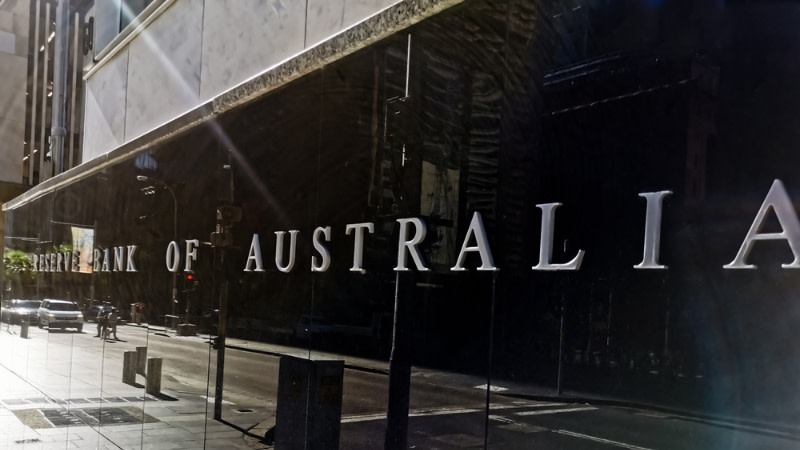Rate Hike ‘Tightens Screws’ on Teetering Construction Sector

The Reserve Bank of Australia’s decision to resume its aggressive interest rate hike strategy has “tightened the screws another notch” on the under pressure development sector.
With its 11th increase in the cash rate over the past 12 months as well as the spectre of more rises ahead, it seems all does not bode well for Australia’s teetering construction industry and housing supply crisis.
According to AMP Capital chief economist Shane Oliver, the RBA’s shock move to lift interest rates by 25 basis points to 3.85 per cent after last month’s short-lived reprieve is “a bit of a blow”.
And potentially a fatal one for industry players already on the brink of collapse.
“Along with households with debt, property developers are in the frontline of this,” Oliver said.
“Obviously it’s going to be a negative for the industry because it has already seen big increases in costs, delays associated with building material and worker shortages—and debt problems.
“And now some buyers are having to back out because of the higher interest rates.
“So this just tightens the screws another notch and the future is not particularly bright given that unusual combination of negatives all at once.”
Oliver said home builders, in particular, were at risk and “where the vulnerability remains high”.
“This could accelerate that process, obviously, depending on how high interest rates go. I mean, it’s the sort of thing that happens when you get rapid rises in interest rates … we’ve already seen some go over the edge, this could push a few more.”
He said that was especially “problematic right now because we have a shortage of homes”.
“To see home construction, in many cases, go into abeyance because the builders run into trouble, that’s a big problem for the economy,” Oliver said.
“And this year we’re also going to have 400,000 immigrants—when you add that to what we saw last year, we really need another 200,000 homes in Australia and that ignores the underlying natural population growth.
“So, having the industry which is responsible for supplying the bulk of those properties run into trouble like it is, and likely to see more difficulty going forward, is particularly worrying and can only accentuate the housing shortfall.”
The RBA’s move was not forecast but at the same time not surprising to the majority of the nation’s top economists. More than 75 per cent of them—or 26 of the 34 surveyed last week—predicted the central bank would hold its official cash rate at 3.6 per cent.
“I think most of us had sort of come to the view that ‘well, yes, inflation is still too high but it is starting to fall’,” Oliver said. “And there is increasing evidence that the rate hikes to date are causing pain and it would, therefore, have made sense to continue to pause to better assess the lagged impact of those rate hikes.
“But the RBA has jumped in there again and I just find it a little bit disappointing and worry that it will end up overdoing it.”
In announcing the cash rate increase, RBA governor Philip Lowe said although inflation had passed its peak, at 7 per cent it was still too high.
“Given the importance of returning inflation to target within a reasonable timeframe, the board judged that a further increase in interest rates was warranted,” he said.

Lowe said the decision to hold rates steady last month was to provide additional time to assess the state of the economy and the outlook.
“While the recent data showed a welcome decline in inflation, the central forecast remains that it takes a couple of years before inflation returns to the top of the [2-3 per cent] target range.
“The board’s priority remains to return inflation to target. High inflation makes life difficult for people and damages the functioning of the economy,” he said. “And if high inflation were to become entrenched in people’s expectations, it would be very costly to reduce later, involving even higher interest rates and a larger rise in unemployment.”
To keep the economy “on an even keel” Lowe all but ruled out putting interest rates on hold again in the immediate future.
“Some further tightening of monetary policy may be required to ensure that inflation returns to target in a reasonable timeframe, but that will depend upon how the economy and inflation evolve,” he said.
Finder head of consumer research Graham Cooke said the news that interest rates were back on the rise—hitting their highest level since April 2012—would be “a heavy blow for many”.
“Australians with an average loan size of $586,000 will be forking out around $14,000 more per year compared to what they were paying this time last year,” he said.
Real Estate Institute of Queensland chief operating officer Dean Milton agreed the decision would weigh heavily on homeowners and investors.
“We have seen regulatory chaos from state and federal governments, and whiplashing back to another interest rate rise only adds to this pain,” he said.
“There’s barely been time for the market to absorb the lagged impact of the previous 10 consecutive rises and reassess the approach based on this.
“Equally, it’s difficult to see how would-be buyers can catch a break when their borrowing capacity has been on such unsteady footing.”
Milton said economic conditions were already stifling future supply and pushing home ownership further out of reach for many.
“Building approvals for houses are down which will have impacts on short-to-medium term supply, and lending statistics are also showing buyer activity is continuing on a downward trend,” he said.















